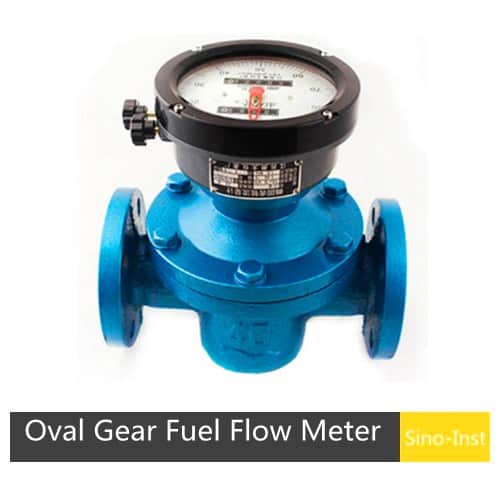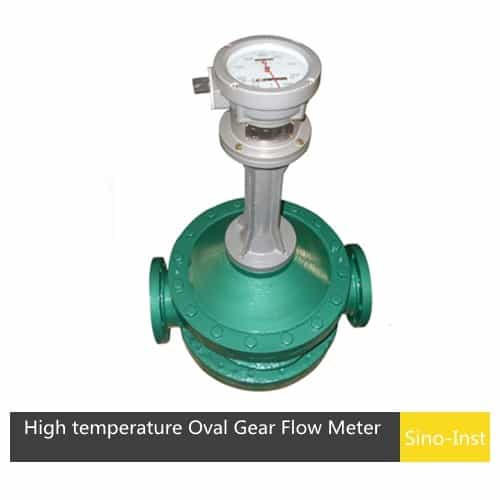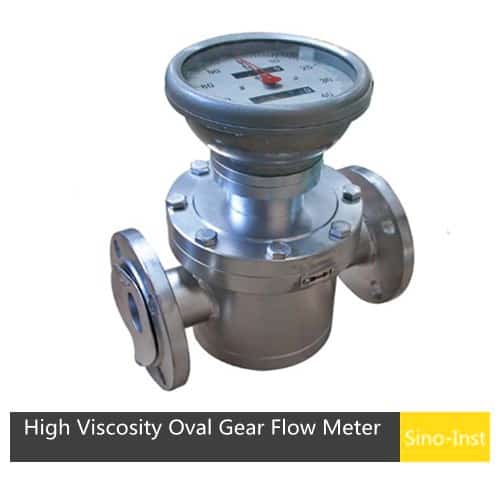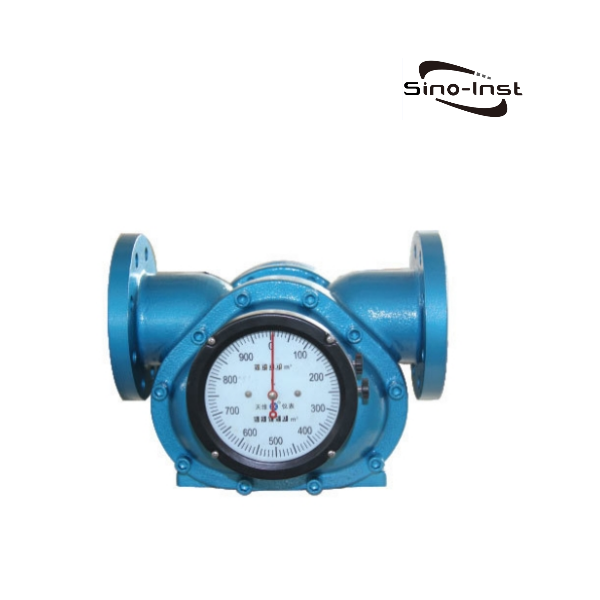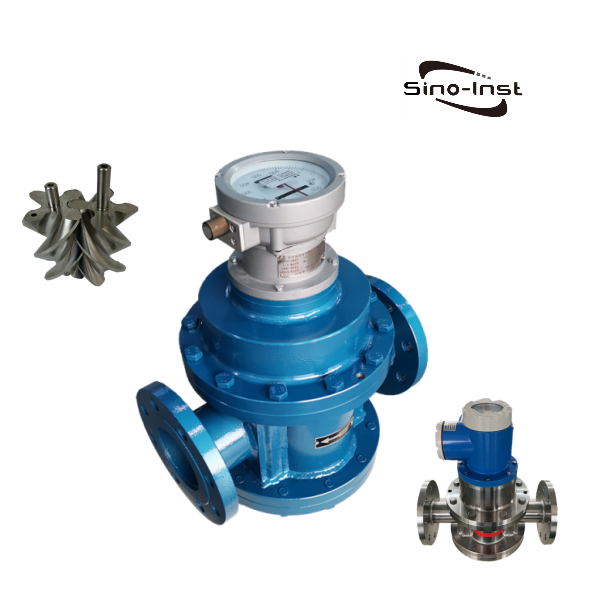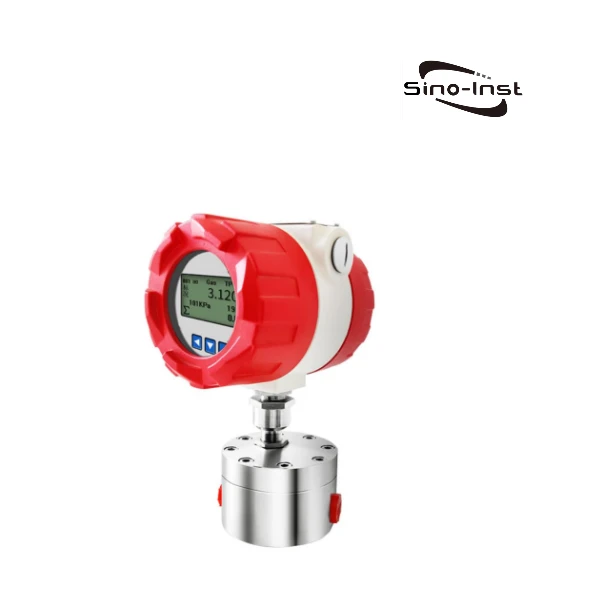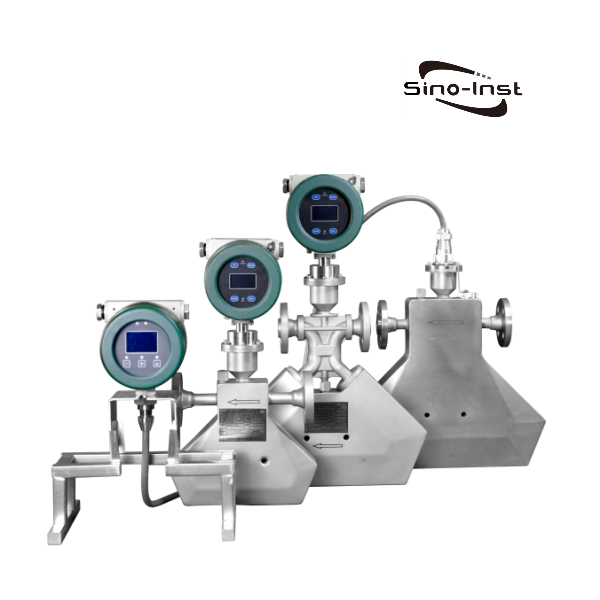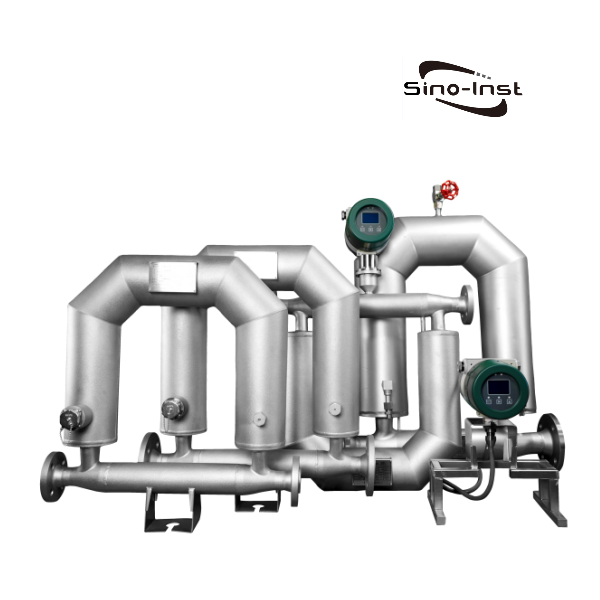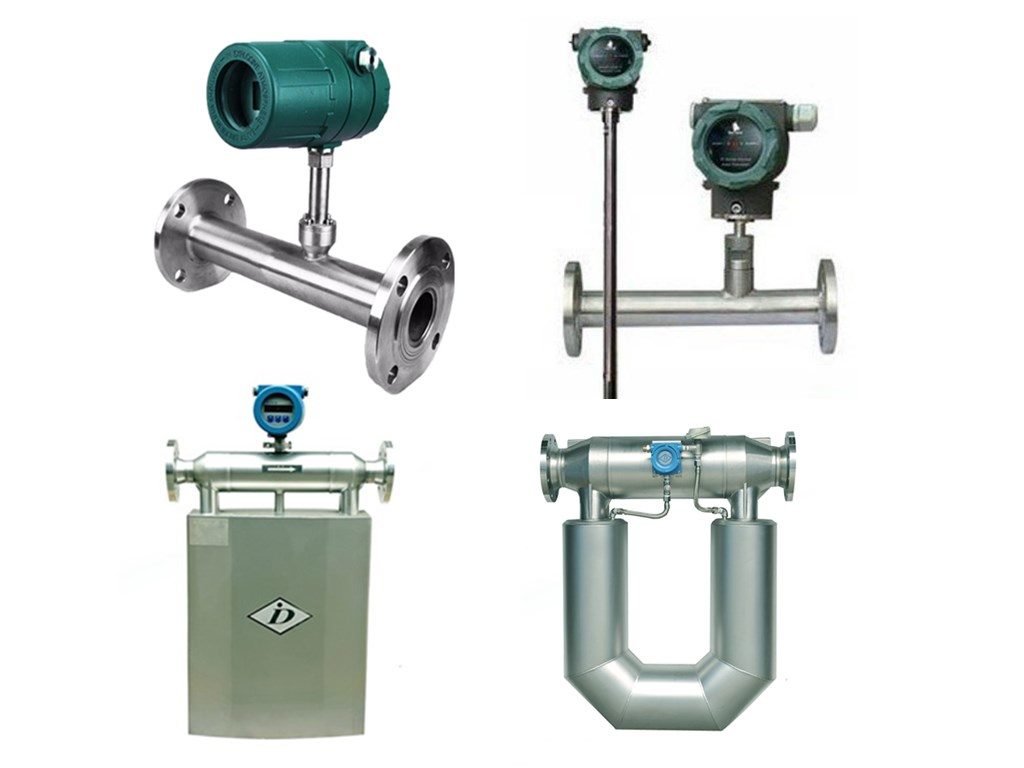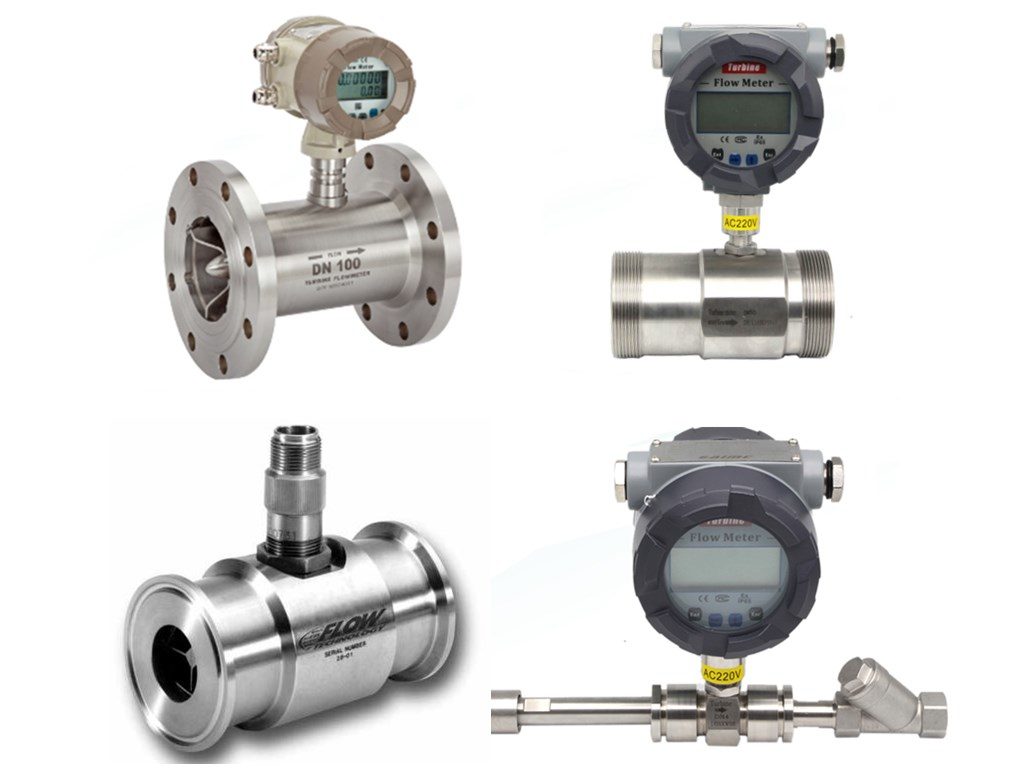High Viscosity Flow Meters are instruments for measuring the flow of viscous fluids.
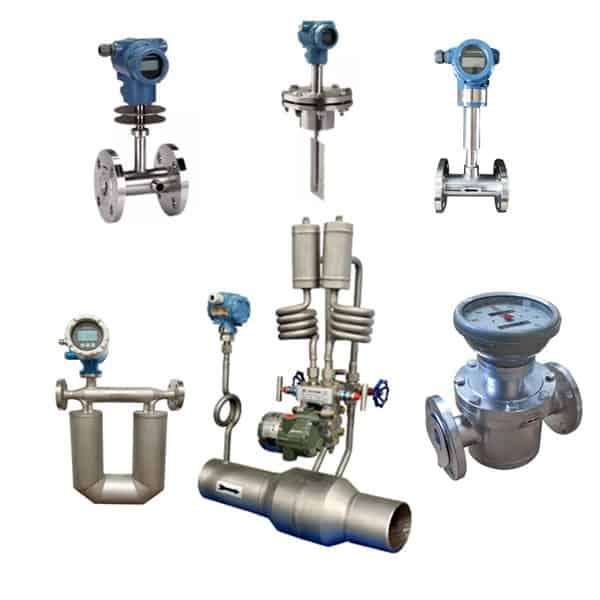
How to measure the flow of viscous liquids? For example: glue, eye drops, asphalt, etc. Commonly used flow meters may not be suitable. High viscosity flow meters are flow meters that measure the flow of viscous fluids.
Common high viscosity flow meters are: Oval Gear flow meters. Mass flow meter, Target flow meter, and Wedge flow meter also works for viscousity liquids.
Featured Flow Meters for High Viscosity Fluids
High Viscosity Liquids
Viscosity is one of the important factors that affect the flow properties of fluids. Fluids with high viscosity require greater external forces to flow, and the energy loss during the flow process is greater. Fluids with low viscosity are easier to flow and have less energy loss.
Viscosity is a physical quantity that measures the resistance to fluid flow. Common units include dynamic viscosity (Pa·s), kinematic viscosity (m²/s) and Engler viscosity (EN).
Common high viscosity liquids are: Crude oil, diesel, heavy oil. Asphalt, paraffin, honey, methanol, crude benzene, resin, and polyvinyl alcohol. High Viscosity Liquids are also widely used in various industries.
- High viscosity fluids (HVF) are used as raw materials (melted vegetable and animal fats) or finished products (chocolate, ice cream) in the food industry.
- In the construction industry, they are used as liquid phase change materials (PCMs) to store thermal energy structures or building materials in buildings. For example, liquid concrete, asphalt and tar.
- In the automotive industry, they are used as PCMs for passive cooling of batteries, as well as many other materials.
Common high viscosity fluids:
- Resin, glue;
- Hydraulic oil, lubricating oil, grease;
- Fuel oil;
- Ink, asphalt;
- Cooking oil, fish oil;
- Glucose;
- Honey;
- Whey 48% sugar;
- And so on. . .
Our Sino-Inst flowmeter can measure the following media viscosities: 0.6-2mPa.s, 2-200mPa.s, 200-1000mPa.s, 1000-2000mPa.s, and the maximum is 400,000cp.
Next, let’s take a closer look at the characteristics of high viscosity flow meters with superior properties.
Oval Gear Flow Meter - Best Flow Meter for High Viscosity Fluids
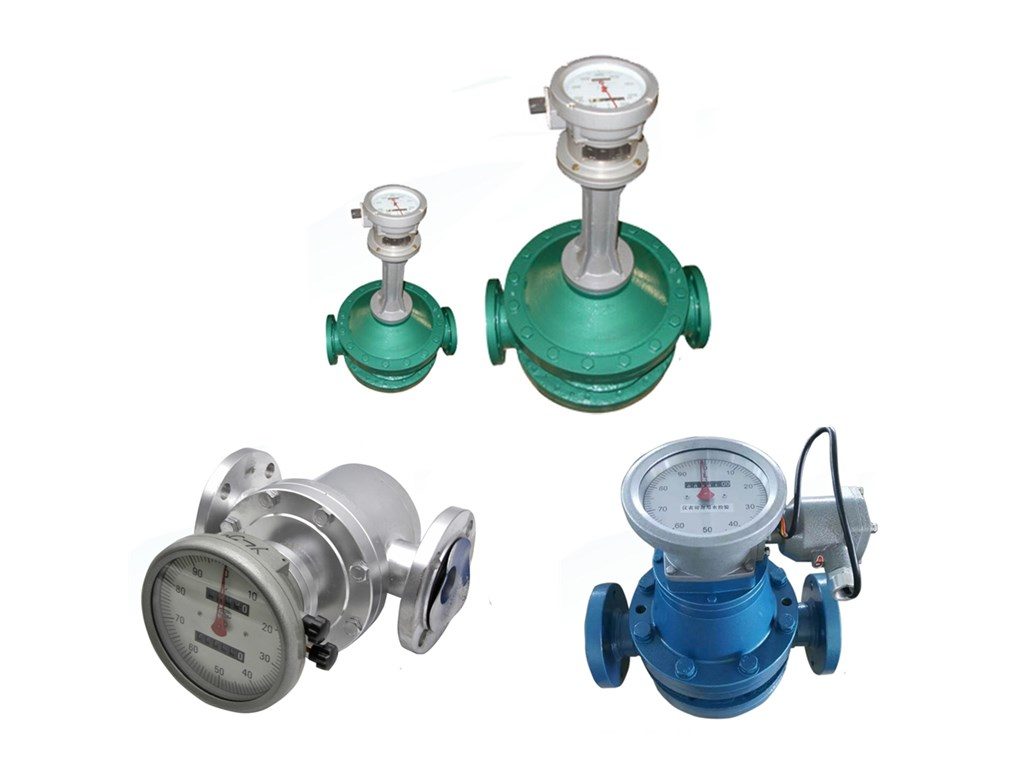
When the measured liquid enters the oval gear flowmeter through the pipeline, the pressure difference generated at the inlet and outlet drives a pair of gears to rotate continuously. The liquid measured by the crescent cavity is continuously transported to the outlet. The product of the number of revolutions of the oval gear and four times the displacement each time is the total flow of the measured liquid.
Therefore, it is not difficult to find from the measurement principle of the oval gear flowmeter that it relies on the pressure head of the measured medium to drive the oval gear to rotate for measurement. It has nothing to do with the flow state of the fluid.
When measuring liquids with high viscosity, the leakage from the gap between the gear and the metering space is small. Therefore, the greater the viscosity of the measured liquid, the smaller the leakage error. The more favorable it is for measurement, the higher the measurement accuracy. It can be said that the oval gear flowmeter is the best choice for measuring the flow of high-viscosity liquids.
Coriolis Meter for High Viscosity Fluids
The mass flow meter is an instrument that directly measures the flow of high-viscosity fluids. It has the advantages of high accuracy, good stability, and easy operation.
High-viscosity fluids have large internal friction, and traditional volume flow meters are difficult to accurately measure their flow. The mass flow meter uses a direct measurement method to avoid the errors of traditional volume flow meters. Therefore, it has a wide range of applications in measuring the flow of high-viscosity fluids.
The mass flow meter can also be customized to measure High temperature type: -50~350℃, High pressure type: up to 30MPa.
New Gear Flow Meter Customized For: Micro Flow - High Temperature - Low Temperature - High Pressure
The circular gear flowmeter is a new type of high-precision flowmeter. It can be used to measure media under various extreme conditions. Especially for high-viscosity fluids with small flow rates.
- High pressure resistance (1.0-45MPa);
- High and low temperature resistance (-196℃-200℃);
- Can measure various viscous media;
- High precision and high repeatability;
- Pulse output/analog output optional;
- Wide range ratio (1:100);
- Wide measurement range;
- Strong corrosion resistance and anti-fouling ability;
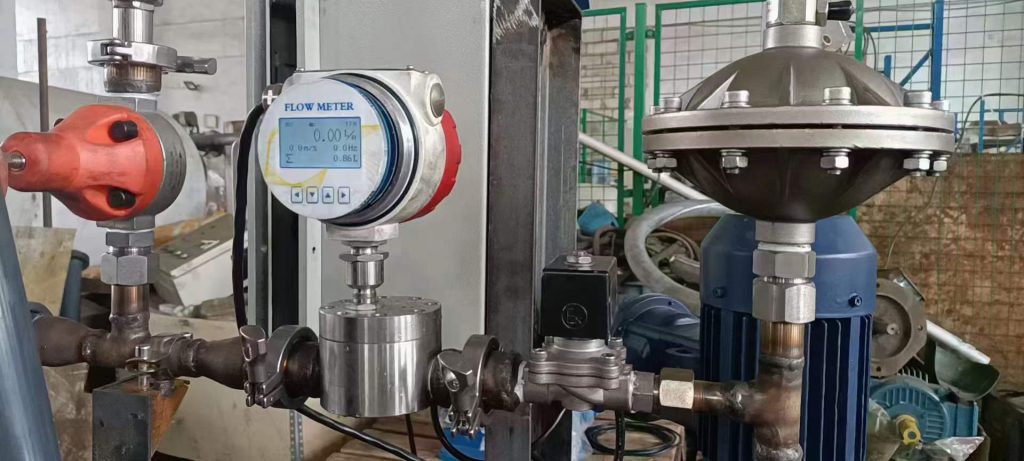
Turbine Flow Meter - Low Flow Viscosity Flow Meter
The turbine flowmeter measures the flow of the medium due to the rotation of the impeller. Generally speaking, liquids with a kinematic viscosity less than 5 × 10 ^ -6m2 / s at the working temperature can be measured. If the medium viscosity is too large, the impeller will be blocked and the impeller will stop rotating.
The working principle of the turbine flowmeter:
When the fluid flows into the flowmeter, it is rectified and accelerated under the action of a dedicated integrated rectifier at the air inlet.
As the turbine blades and the fluid flow at an angle, the turbine generates a rotating moment and overcomes the friction torque. After the fluid resistance torque, the turbine starts to rotate. In a certain flow range, the angular speed of the turbine rotation is proportional to the fluid volume flow rate, so as to obtain the corresponding flow rate.
More about the Technology Guide to Turbine Flow Meters
So how big is the effect of the medium viscosity on the turbine flowmeter? Let’s talk about this next.
1. As the viscosity increases, the starting displacement of the turbine flowmeter will decrease. And the minimum speed of the response will also decrease.
2. As the viscosity increases, the K value of the turbine flowmeter will decrease, and the linearity will also deteriorate.
3. The turbine flowmeter for measuring different viscous fluids can be approximated by the K-value and the Reynolds number of the turbine flowmeter. Only after one calibration with different Reynolds numbers under high viscosity conditions. Response curves to different viscous fluids.
4. Before entering the linear section of the turbine response, the K value continued to increase. And it increased exponentially with the Reynolds number at the inlet of the flowmeter.
5. For low-productivity wells with relatively high production fluid viscosity, a more sensitive turbine of the acquisition system should be used to enable it to accurately acquire signals with low speed (less than 0.01 r / s).
High Viscosity Flow Measurement
High Viscosity flow measurement is an important job for many industris. High Visocity flow measurement is also a tough job for us. High viscosity liquids pose a problem for High Viscosity Fluid Flow Meters types. Such as the vortex meters.
Turbine meters, DP flow meters and velocity measuring devices rely on a minimum liquid speed. And they are challenged by high viscosity fluids. To use these techniques with high viscosity fluids, we can use larger diameter pipes. Larger diameter pipes will maintain line pressure drop and liquid transport costs as low as possible.
Many high viscosity fluid flow meter technologies operate best in the turbulent flow region i.e. with Reynolds numbers above ~2000. This is a dimensionless number that characterises fluid motion.
When a flowmeter applicated in high viscosity liquid, you should select an appropriate meter. Lots of different type flow meters cannot measure high viscosity fluid.
Sino-Inst’s Turbine flow meters, DP flow meters (like orifice plate) are velocisty flowmeters. They both request a mini medium speed. Normally, High viscosity fluid even can not offer this mini speed.
High viscosity fluids are thick, and are hard to pour and demanding additional power to pump.
Such as oil, asphalt/ bitumen, Fructose,molasses, honey, glucose, resin etc.
Low viscosity medium like pure water or milk are very thin and easily pumped.
Definition of Viscosity
The viscosity of a fluid refers to the property that the resistance of that fluid to flow. When the microfluids or the fluid layer inside the fluid have a relative movement, internal friction is generated. And this internal friction will prevent the fluid from doing relative movement.
For example, high viscosity fluids such as oil, honey, etc. are thick making them hard to pour and requiring additional power to pump. Low viscosity fluids like water or alcohol are thin and easily pumped.
Viscosity is generally expressed in five ways:
Dynamic viscosity, kinematic viscosity, Engle viscosity, Rayleigh viscosity and Sai viscosity.
Obviously, any actual fluid is viscous. Its viscosity can be reflected in the different ability of different fluids to resist relative. It can be seen that viscosity is an inherent property of actual fluids. And it will directly reflect the difference in fluid’s ability to resist relative movements. It can be seen that viscosity is an inherent property of the actual fluid. And it will directly affect the fluid’s flow and heat transfer performance.
High viscosity fluid flow meters are operated at high viscosity (low Reynolds numbers). The velocity profile of a fluid is rather like a parabola with the centre liquid traveling at a higher speed than the fluid close to the pipe wall. This is because of the viscous drag created against the static boundary. In lower viscosity fluids by comparison the velocity profile is “fully developed” i.e. the flow is mostly traveling at the same speed except for a small area close to the pipe wall.
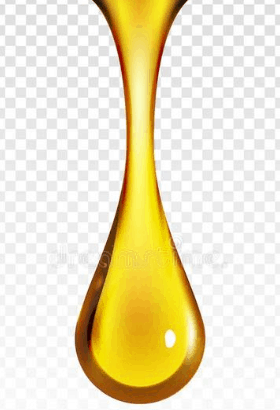
Crude Oil & Viscous Fluids

The measurement of Crude Oil and Viscous fluids requires rugged and reliable metering equipment.
Compared with other liquid measurement, petroleum flow measurement has the following main features.
- There are many oil varieties, and the differences between different varieties are large.
a. Medium and low viscosity petroleum products such as kerosene, diesel. Low viscosity, low temperature, clean fluid, no harsh requirements for measurement.
b. High-viscosity oils such as crude oil, heavy oil, residual oil, etc., have high viscosity. In order to facilitate transportation, they are often heated to higher temperatures. The fluid contains solid impurities and must be strictly filtered before flow measurement.
c. Low viscosity oils such as gasoline and liquefied petroleum gas have very low viscosity.
- High measurement accuracy is required. The measurement of oil used for trade settlement must reach the required accuracy. To ensure the interests of both the supply and demand sides. GB 17167 stipulates that the measurement of gasoline, diesel, and crude oil used for energy consumption assessment of branch plants (workshops) and key energy-consuming equipment should reach 0.5% accuracy. The measurement of gasoline, diesel, and crude oil used for entering and leaving enterprises should reach 0.35% accuracy. While in In bulk oil measurement, the requirements for measurement accuracy are higher and the significance is greater. For example, the crude oil measured by the crude oil transfer metering station is about several million tons per year. And an error of one thousandth will cause a settlement error of several million yuan per year.
- On-line live flow calibration should be considered. The flowmeter used for petroleum measurement generally has a large caliber, which is extremely inconvenient to remove for inspection. Generally, there should be a real flow calibration facility or an interface connected to a standard meter for online real flow calibration.
- Mass flow measurement. In most cases it is settled by mass flow.
- The fluid is flammable and explosive.
Why Does Viscosity Affect Flow Rate?
The resistance to flow is proportional to the speed V. For laminar flow, the pressure drop can be expressed as:
J = 32μVL / (ρgd ^ 2)
The relationship between the flow velocity V, the flow rate Q, the pipe diameter d, the pressure difference P, and the dynamic viscosity coefficient μ of the material is:
V = ρgd ^ 2P / (32μL)
Q = πd ^ 4ρgP / (128μL)
Other physical quantities in the formula:
π—pieral ratio;
ρ—fluid density,
g—gravitational acceleration;
P—pressure difference between two ends of the pipeline;
L—pipe length
How Does Viscosity Affect the Different Flow Meter Technologies?
Viscosity effects different meters in different ways.
Here we briefly discuss.
We define “high viscosity” as: more than (say) 1000 cP.
Positive Displacement (PD) Meters
The accuracy of Positive Displacement meters, such as Oval gear meters, are not greatly affected by changes in viscosity. Which is one of PD meters main advantages. A PD meter can be calibrated at 3 centipoise and be within ±0.5% accuracy in a range of 1 centipoise to 1,000,000 centipoise.
Mass flow meters can measure high-viscosity liquids. But, performance can sometimes be compromised. If the pressure drop across the flowmeter limits, accurate flow measurement to the lower part of the flow range.
Magnetic flowmeters can also measure electrically conductive liquids that exhibit high viscosity. As a practical matter, magnetic flowmeters are not often applied to high-viscosity liquid. Because the majority of such applications involve hydrocarbons that are not sufficiently conductive.
Differential pressure and Vortex shedding flowmeters
Differential pressure and vortex shedding flowmeters are generally not applied to high-viscosity liquids. Because of their Reynolds number constraints.
Unless pressure is a concern, you should not need to consider the effect of fluid viscosity if it remains with a range of 3 to 500cP. For oval gear meters equipped with High Viscosity Rotors, that range increases to 3 to 2,000cP.
For liquids with viscosities of less that 3cP, there are several considerations that need to be factored into your final choice of flow meter(s).
- Stated minimum flows need to be adjusted to 10% of the stated maximum flows. For example, the OM006 (1/4 inch) meter has a published range of 0.5 to 27 GPH. If used for measurement of fluids with a viscosity of 3cP or less, adjust the range to 2.7 to 27 GPH.
- Although we can’t offer specifics, accuracy can vary slightly when measuring any liquid that has a viscosity ranging from 1.0 to 3cP that has no lubricating qualities.
- The most difficult fluids to measure with an Oval Gear meter are non-lubricating liquids with viscosities below 1.0cP.
- For fluids with viscosities greater than 2,000 cP, end users should give serious consideration to the use of High Viscosity (HV) rotors. Doing allows for additional flow ranges under similar conditions.
What Factors Affect Viscosity?
The value of fluid viscosity varies with the type of fluid, and changes with pressure and temperature.
- 1) Fluid type. Generally, the viscosity of a liquid is greater than the viscosity of a gas under the same conditions.
- 2) Pressure. For common fluids, such as water, gas, etc., the viscosity value does not change much with pressure and is generally negligible.
- 3) Temperature. Is the main factor affecting viscosity. As the temperature increases, the viscosity of the liquid decreases and the viscosity of the gas increases.
a. Liquid:
Cohesion is the main factor that produces viscosity. When the temperature increases, the distance between molecules increases. The attractive force decreases. so the shear stress generated by the shear deformation speed is reduced. So the fluid viscosity value decreases.
b. Gas:
The distance between gas molecules is large and the cohesive force is small. So the viscosity is mainly caused by the exchange of momentum of gas molecules. As temperature rises, molecular movements accelerate. And momentum exchange is frequent, so fluid viscosity increases.
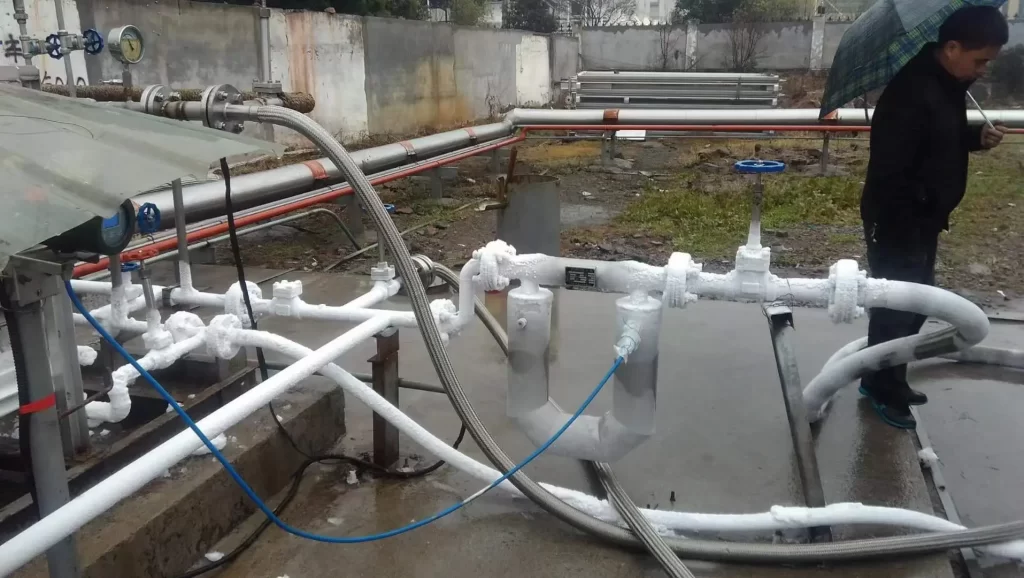
More Flow Measurement Solutions
- Ultrasonic Clamp On Flow Meter – For Easier Water Flow Measurement
- Guide On Industrial Air Flow Measurement Devices
- Everything You Need To Know About Chemical Flow Meters
- Boat Fuel Flow Meters: Installation Tips and Comparability
- Industrial Refrigerant Flow Meters
- Getting to Know The Propane Flow Meters: Better Monitoring of Propane Utilization
- Importance of Digital Fuel Flow Meters and Fuel Oil Flow Meters in Modern-day Industrial Applications
- Techniques, Importance, and Challenges of Natural Gas Flow Measurement
Sino-Inst has many years of experience in flow meter production and supply. We specialize in providing efficient flow measurement solutions for users in various industries.
Whether it is high temperature, high pressure, low temperature, high viscosity or other extreme conditions, we will try our best to meet your measurement needs. If you have any questions, please feel free to contact our engineers!
-1.jpg)
